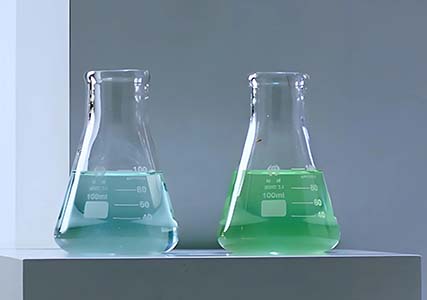With the continuous advancement of science and technology, the quality of construction engineering has been steadily improving. In order to ensure the overall quality of concrete works in actual construction processes, additives are often added to the concrete. High-performance water reducers, as an additive, are added to concrete to absorb water and increase the cohesiveness of the concrete. Currently, in concrete engineering, high-performance water reducers are mainly polycarboxylate-based products.

High Water Reduction Rate: Under the same slump, high-performance water reducers have a higher water reduction rate, generally over 35%. Due to the high water reduction rate, the concrete’s water consumption is significantly reduced. When calculating the dosage of the water reducer, it should be calculated as 0.25% of the cement amount, and a high-performance concrete mixture is prepared by increasing the amount of admixture.
Good Fluidity: Generally speaking, during the application of high-performance water reducers, the fluidity does not deteriorate, which helps to reduce the occurrence of concrete segregation or pump blockages. To ensure the performance of concrete mixtures, water reducers should be optimally selected according to the type of cement to ensure construction quality.
Strength Enhancement of Mixtures: The addition of water reducers (such as slag, fly ash, etc.) to concrete can enhance the strength of the mixtures. Under the condition of stable cement dosage, adding high-performance water reducers to the concrete can enhance the strength of the concrete by over 70%.
Low Total Alkaline Content: Adding an appropriate amount of high-performance water reducer to the concrete can reduce the alkaline content of the concrete, thereby lowering the incidence of alkaline aggregate reaction to some extent and improving the durability of the concrete.
Low Shrinkage: Due to the excellent performance of polycarboxylate water reducers, the quality of the formula raw materials can be ensured during material selection. Moreover, the low total alkaline content of the water reducer helps maintain the stability of the concrete and prevents cracking.
High-performance water reducers are mainly categorized into three types: slump retaining, functional, and shrinkage-reducing. Below is a brief description of these types.
Slump Retaining Water Reducer: Generally used in concrete development to ensure the slump of the concrete and achieve reasonable control of concrete fluidity by adding this type of water reducer.
Functional Water Reducer: Primarily divided into two functions: early strength and retardation. The early strength type allows the concrete to meet heat release requirements in the early stages, promoting concrete setting, which is beneficial for winter construction. However, the retardation type mainly maintains the state of the concrete for later repair works. Combining these two water reducers can exploit the retardation properties of the cement.
Shrinkage-Reducing Water Reducer: Mainly synthesized through esterification, this type not only has certain water-reducing and shrinkage-reducing effects but also fully enhances the water-reducing function of the concrete.
Control of Sand Mud Content: When the mud content exceeds 2%, it affects the fluidity of the concrete. For fine sand, the differential adjustment method can be used to improve the workability of the concrete. If the fluidity of the concrete is reduced, the water-reducing molecules will be affected by the clay because the soil layer structure can adsorb the water-reducing molecules, reducing the content of the water reducer. Therefore, to improve the performance of the water reducer, other additives should be added to the water reducer.
Inability to Mix with Most Materials: Due to the incompatibility of high-performance water reducers with most materials, it should be used separately from other water reducers in the concrete. Therefore, before replacing the water reducer, the container should be cleaned, and the new water reducer should be added to the container. During the production of the water reducer, it also needs to be produced separately. Different brands of cement have different adsorption capacities for water-reducing molecules. Therefore, to ensure concrete fluidity and avoid adsorption problems, the molecular structure of the water reducer needs to be adjusted.
Air Content: To improve the workability of concrete, reasonable control of the air content in the water reducer is necessary. First, the air content should be used according to the relevant standards, and the process of first removing and then introducing should be adopted to retain high-quality small air bubbles. If air content needs to be increased, an appropriate amount of air-entraining agent should be added to the water reducer. Currently, the main air-entraining agents incompatible with high-performance water reducers are rosin heat polymer air-entraining agents.
Temperature Control: In high temperatures, the slump of the water reducer increases, and similarly, in low temperatures, the slump increases as well. It shows that high-performance water reducers are easily affected by temperature. Therefore, to avoid such impacts, temperature control should be strengthened during actual construction to prevent fluctuations. Meanwhile, the structure of high-performance water reducers is highly adjustable; under varying temperature conditions, the content of adsorption groups needs to be adjusted to prevent the concrete’s performance from being affected by temperature.
Application of Retarding Technology: During the long-term use of concrete, to ensure it can be adjusted and reshaped, facilitating post-construction repair work, the combined use of the retarding time of water reducers and high-performance water reducers can be applied. However, if these two additives are affected by the weather, their performance will decrease, mainly due to their incompatibility with other materials. Therefore, construction should take this into account.